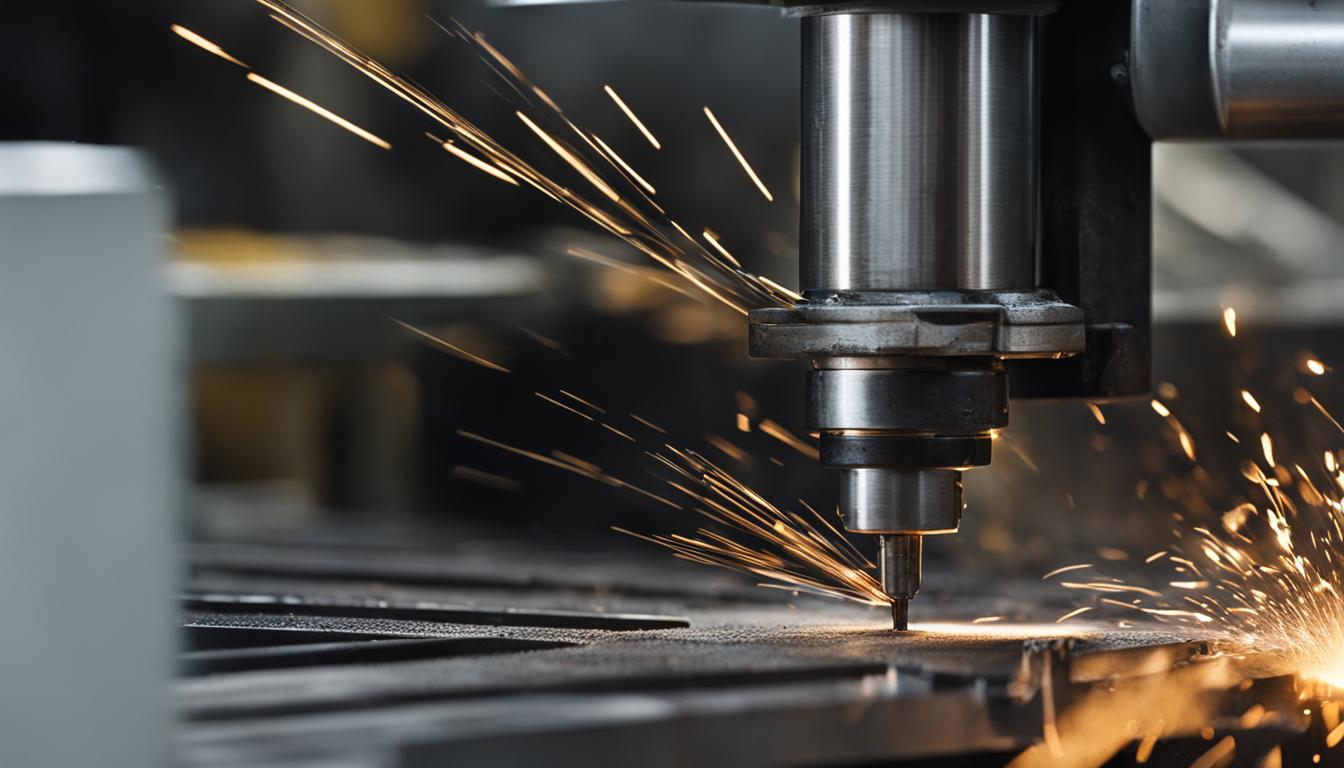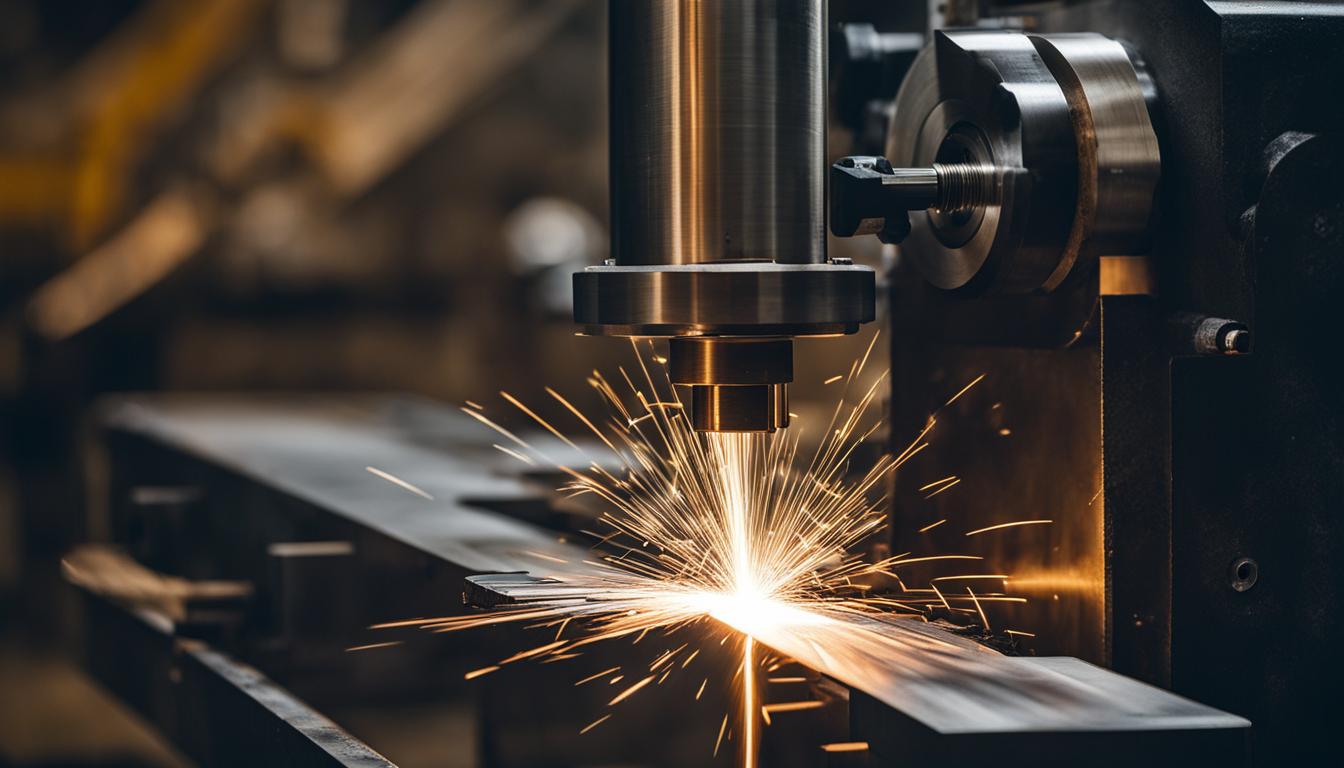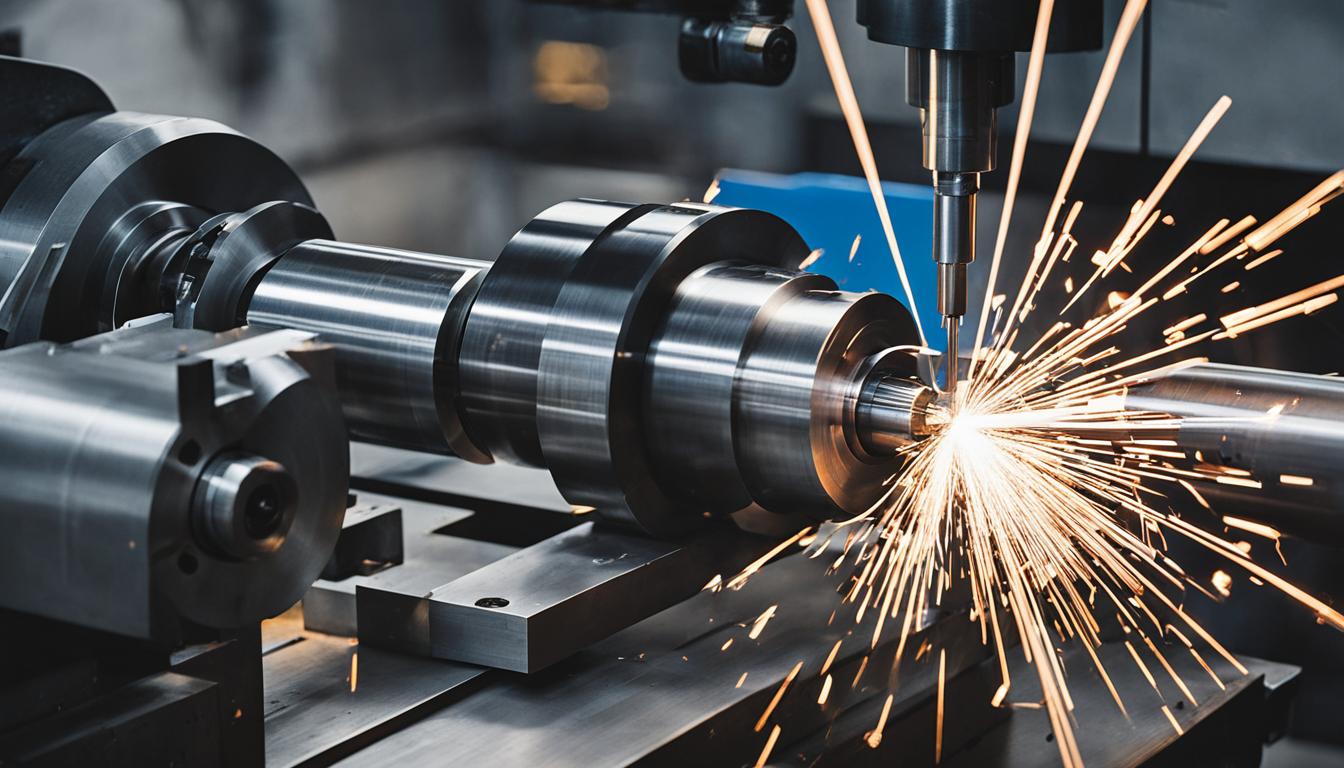Machining is a subtractive manufacturing process that removes material from a workpiece to create desired shapes and features. It encompasses various operations, including conventional and non-conventional methods. Conventional machining processes, such as turning, drilling, milling, and grinding, use physical cutting tools to remove material through direct contact. These methods are widely used in manufacturing industries for producing components like engine parts, shafts, and aircraft components.
Non-conventional machining processes, on the other hand, utilize alternative energy sources like electricity, chemicals, or lasers to remove material without direct tool contact. Examples include electrical discharge machining (EDM) and chemical machining. These techniques are particularly useful for working with hard or brittle materials and creating intricate designs. The choice between conventional and non-conventional machining depends on factors such as material properties, desired precision, and complexity of the part being manufactured.
Modern innovations, including automation, robotics, and advanced CNC capabilities, have significantly enhanced machining processes, improving efficiency, accuracy, and the ability to produce complex parts. Understanding the various types of machining operations is crucial for selecting the most appropriate method for specific manufacturing requirements.
- Machining is a subtractive manufacturing process that shapes metal by removing material.
- There are various types of machining processes, including turning, drilling, milling, grinding, planing, sawing, broaching, electrical discharge machining (EDM), and electrochemical machining (ECM).
- Precision machining is an essential aspect of the machining industry, ensuring high-quality and accurate results.
- Machining tools, such as lathes, drill bits, milling machines, grinders, planers, and saws, are used to perform different machining operations.
- Understanding machining techniques and their applications is crucial for achieving specific shapes, sizes, and finishes in the production of parts and components.
Turning – A Common Machining Method
Turning is a popular and widely used machining method that involves the use of a lathe to shape metal components. It is a subtractive manufacturing process where a cutting tool is used to remove material from a rotating workpiece, resulting in the production of cylindrical shapes. Turning can be performed manually or with the aid of computer numerical control (CNC) turning machines, which offer increased precision and productivity.
The process of turning begins by securing the workpiece in the lathe, which then rotates at a controlled speed. A cutting tool is brought into contact with the workpiece, and as it moves along the diameter, it gradually removes material to create the desired shape. Due to the rotational movement, turning is particularly effective in producing cylindrical components such as shafts, pins, and tubes.
Turning machines are equipped with various types of cutting tools, including single-point tools, multi-point tools, and inserts. These tools can be customized to achieve specific dimensions, surface finishes, and surface features. For instance, by using specialized cutting inserts, turning can produce holes, threads, and grooves. Additionally, advanced turning techniques such as contour turning allow for the creation of intricate and complex shapes.
The applications of turning are diverse and span across several industries. In the manufacturing sector, turning is used for the production of engine components, gears, bearings, and fasteners. In the automotive industry, turning is applied in the manufacturing of crankshafts, camshafts, and brake discs. This machining method is also employed in the woodworking industry to shape wooden products such as furniture legs and spindles.
Overall, turning is valued for its versatility, efficiency, and accuracy in shaping cylindrical components. The use of CNC turning machines has further enhanced the productivity and precision of this machining method, enabling manufacturers to meet the increasing demands of various industries.
| Type of Turning | Key Features | Applications |
|---|---|---|
| External Turning | – Creates the outer surface of a workpiece – Can be used for facing, taper turning, and contouring |
– Shafts and rods – Tubes and pipes – Threaded components |
| Internal Turning | – Creates the inner surface of a workpiece – Can be used for boring, tapering, and back facing |
– Cylindrical holes – Tapered holes – Grooved components |
| Facing | – Creates a flat surface perpendicular to the axis of rotation | – End faces of workpieces – Surface finishing |
Drilling – Creating Holes with Precision
Drilling is a machining process that uses drill bits to create cylindrical holes in the workpiece. Unlike other machining methods that shape the workpiece, drilling focuses on creating holes with accuracy and consistency.
During the drilling process, the machine feeds the rotating drill bit perpendicularly to the surface, resulting in vertically-aligned holes. The drill bit applies force and rotates at high speeds to remove material and create the desired hole diameter.
There are different types of drill bits available to accommodate various drilling applications:
- Spotting drills: used to create shallow holes at specific locations.
- Peck drills: suitable for deep hole drilling in stages, preventing chip buildup.
- Screw machine drills: designed for efficient drilling in high-speed applications.
- Chucking reamers: used to enlarge existing holes and achieve precise dimensions.
The drilling process is widely used across industries due to its versatility and applicability. Some common applications of drilling include:
- Construction: drilling holes for anchor bolts, wiring, and plumbing.
- Medical equipment: creating holes for surgical implants and instruments.
- Transportation: manufacturing aircraft components and automotive parts.
- Electronics: PCB fabrication and hole drilling in electronic devices.
Drilling plays a crucial role in various manufacturing processes and allows for the precise creation of cylindrical holes in workpieces. The selection of the appropriate drill bit and drilling technique depends on factors such as the material being drilled, desired hole size, and specific application requirements.

Milling – Shaping the Workpiece with Precision
Milling is a versatile machining method that utilizes rotating multi-point cutting tools to shape and remove material from the workpiece. It can be performed on both CNC milling machines and manually operated mills, offering flexibility and precision in various applications.
One of the key advantages of milling is the wide range of cutting tools available, allowing for detailed customization and efficient material removal. These rotating cutting tools, such as end mills, helical mills, and chamfer mills, provide different cutting approaches and geometries to achieve specific machining goals.
CNC milling is a modern approach that utilizes computer numerical control to automate the milling process. This technology enables precise and repeatable machining operations, making it ideal for complex and intricate workpieces. CNC milling machines offer higher productivity, accuracy, and efficiency compared to manual milling, making them a popular choice in industries that require high precision and consistency.
There are different types of milling machines tailored for specific applications. For instance, end mills are commonly used for milling slots, contours, and pockets. Helical mills excel in cutting inclined surfaces, while chamfer mills are ideal for producing chamfers and bevels. From gear manufacturing to slotting, surface machining to complex shape machining, milling finds extensive applications in various industries.
Milling Applications:
- Gear manufacturing
- Slotting and keyway cutting
- Surface machining
- Complex shape machining
- Milling of pockets and contours
With its precision, versatility, and wide range of applications, milling plays a crucial role in the machining industry, offering efficient and accurate solutions for shaping workpieces.

| Type of Milling Machine | Usage |
|---|---|
| End mills | Milling slots, contours, and pockets |
| Helical mills | Cutting inclined surfaces |
| Chamfer mills | Producing chamfers and bevels |
Grinding – Achieving Superior Surface Finish
Grinding is a machining method that removes small amounts of material from flat surfaces and cylindrical shapes. It is a precise and efficient process used in various industries to achieve superior surface finish and dimensional accuracy.
Surface grinders are commonly used to grind flat surfaces. They utilize a reciprocating table that feeds the workpiece into the grinding wheel. This allows for precise control over the amount of material being removed, resulting in a smooth and even surface. Surface grinding is ideal for applications that require tight tolerances and high-quality finishes.
Cylindrical grinders, on the other hand, are designed to grind cylindrical shapes. The workpiece is rotated against a spinning abrasive wheel, removing material and creating the desired cylindrical form. This method is commonly used to produce shafts, rods, and other cylindrical components with precise dimensions and surface finish.
Another technique used in grinding is centerless grinding. It is particularly useful for producing small parts with high volumes. In centerless grinding, the workpiece is supported by a work rest blade and positioned between a regulating wheel and a grinding wheel. The grinding wheel removes material from the workpiece while the regulating wheel controls the speed and feed of the workpiece. Centerless grinding is commonly used in the automotive and aerospace industries.
Grinding can achieve surface finishes of 200-500 min. rms, making it a preferred method for achieving superior surface quality. However, it is important to note that grinding is often followed by further finishing operations like lapping and honing to achieve even higher levels of precision and surface finish. These additional processes help to remove any microscopic imperfections left by the grinding process, resulting in a flawless surface.
Benefits of Grinding:
- Superior surface finish
- Tight tolerances
- Precision grinding for complex shapes
- High-volume production capabilities
- Enhanced durability and wear resistance
- Efficient material removal
Applications of Grinding:
Grinding is widely used in various industries and applications, including:
- Automotive manufacturing: Grinding is used to produce precision components like crankshafts, camshafts, and transmission gears.
- Aerospace industry: Grinding is essential for manufacturing turbine blades, jet engine components, and aircraft landing gear.
- Precision machining: Grinding is utilized in industries requiring extremely tight tolerances and superior surface finish, such as optical lens manufacturing and medical device production.
- Surface enhancement: Grinding can be used to improve the surface finish and appearance of materials such as stainless steel, aluminum, and other metals.
| Grinding Method | Workpiece Type | Applications |
|---|---|---|
| Surface grinding | Flat surfaces | Tool and die making, metalworking, precision machining |
| Cylindrical grinding | Cylindrical shapes | Shafts, rods, precision components |
| Centerless grinding | Small parts | Automotive, aerospace, high-volume production |
Planing and Sawing – Machining Large Surfaces and Cutting Materials
In the world of machining, planing and sawing play essential roles in achieving desired workpiece surfaces and cutting materials effectively. Planing involves the process of machining large flat surfaces, while sawing is used to create shorter lengths from bars and other materials. Both methods offer unique advantages and find applications in various industries.
Planing machines, such as planers and shapers, are used to shape and smoothen large surfaces with precision. These machines employ a cutting tool that moves back and forth across the workpiece, removing material to create a desired finish. Planing can be used not only to create flat surfaces but can also handle inclined surfaces and even produce complex profiles.
Sawing, on the other hand, utilizes cutting tools with toothed bands or abrasive wheels to slice through materials. Cut-off machines equipped with saw blades are commonly used to create shorter lengths of material, making them ideal for cutting bars, pipes, and tubes. Sawing offers flexibility in terms of material types and cuts, allowing for precise and efficient cutting operations.
The applications of planing and sawing are vast and diverse. Woodworking industries rely heavily on planing to produce smooth and flat wooden surfaces for furniture, flooring, and other wooden components. Additionally, planing is used in metalworking processes to shape and finish large metal parts and components.
Sawing finds widespread use in various industries, including construction, metal fabrication, and manufacturing. It is commonly employed in keyway cutting, where saw blades are utilized to create precise keyways in shafts and other components. Moreover, sawing is indispensable in producing various parts and components required in industries such as automotive, construction, and aerospace.
Broaching, EDM, and ECM – Specialized Machining Techniques
Broaching is a unique machining process that utilizes a broach tool with teeth arranged sequentially to create intricate shapes such as square holes and keyways. It is an efficient method that allows for precise and accurate cutting, making it an ideal choice for producing complex shapes in a single pass. Common types of broaching include internal, external, surface, and spline broaching. This technique finds applications in various industries, including automotive, aerospace, and manufacturing of transmission gears and engine components.
EDM, or electrical discharge machining, is another specialized technique in the machining industry. It employs electric arcing discharges between an electrode and the workpiece to remove material with utmost precision, even in hard and difficult-to-cut materials. EDM is often used for producing intricate shapes, sharp corners, and fine details. It has significant applications in the production of molds, dies, aerospace components, and medical implants.
ECM, or electrochemical machining, is a non-conventional machining process that uses an electrically conductive fluid to remove material from the workpiece. The removal is achieved through non-contact electrochemical reactions, which ensures precise and burr-free machining. ECM is particularly suitable for complex shapes, delicate and heat-sensitive materials, and workpieces with high hardness. It is widely used in the aerospace industry, medical device manufacturing, and the production of complex transmission components.
